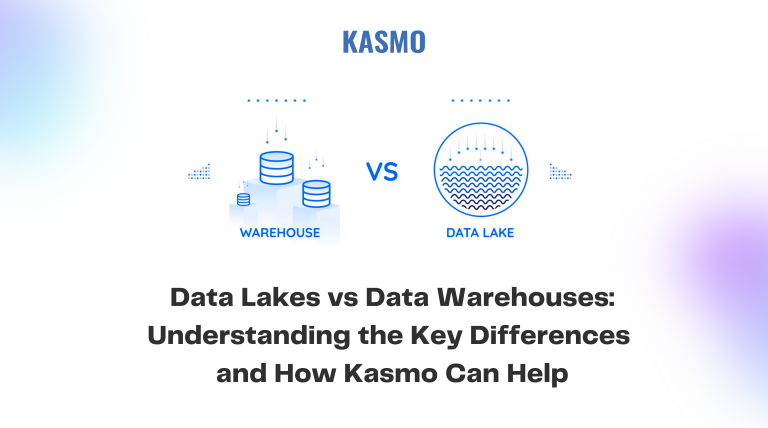In the realm of data analytics, two terms often surface: data lakes and data warehouses. While both are used to store data, they serve different purposes and are not interchangeable. Understanding their differences is crucial as they cater to different needs and require unique optimization strategies.
A quick look at key differences

Data Structure: Raw vs Processed
The most significant difference between data lakes and data warehouses lies in the structure of the data they store. Data lakes primarily store raw, unprocessed data, which can include multimedia files, log files, and other large files. On the other hand, data warehouses store structured, processed, and refined data, typically text and numbers.
Due to their nature, data lakes require larger storage capacity than data warehouses. Raw, unprocessed data is flexible, quickly analyzed for any purpose, and ideal for machine learning. However, without appropriate data quality and governance measures, data lakes may become data swamps.
Purpose: Undetermined vs In-Use
Data lakes store data whose purpose is not yet defined. Raw data flows into a data lake, sometimes with a specific future use in mind and sometimes just to have on hand. This means data lakes have less organization and filtration of data than data warehouses.
In contrast, data warehouses only house processed data, all of which has been used for a specific purpose within the organization and is more likely to be queried in the future. This means that storage space is not wasted on data that is less likely to be used.
Users: Data Scientists vs Business Professionals
Data lakes, filled with raw, unstructured data, usually require a data scientist and specialized tools to process and translate for any specific business use. However, there is growing momentum behind data preparation tools that create self-service access to the information stored in data lakes.
Processed data, like that stored in data warehouses, is used in charts, spreadsheets, tables, and more, so most business users can read it. It only requires that the user be familiar with the topic represented.
Accessibility: Flexible vs Secure
Data lake architecture has less structure, and therefore, data lakes have very few limitations. Data warehouses, on the other hand, are more structured by design. The processing and structure of data make the data itself easier to decipher, while the limitations of structure make data warehouses difficult and costly to manipulate.
Which is Right for You?
Organizations often need both. Data lakes were born out of the need to harness big data and benefit from raw, unprocessed data for machine learning. Yet there is still a need to create data warehouses for analytics use by business users.
The choice between a data lake and a data warehouse depends on your industry and specific needs. For instance, healthcare and education sectors might benefit more from the flexibility of data lakes due to the unstructured nature of much of their data. In contrast, finance and other business settings often find data warehouses more suitable as they can be structured for access by the entire company.
A new model, the data lakehouse, is emerging, which aims to combine the flexibility of data lakes with the data management capabilities of a data warehouse. Only time will tell whether this becomes a “best of both worlds” alternative that can meet a wide range of needs.
In conclusion, understanding the key differences between data lakes and data warehouses is crucial for making informed decisions about your data management strategy. Depending on your company’s needs, developing the right data lake and/or data warehouse will be instrumental in growth.
The Kasmo Advantage
This is where Kasmo can step in to assist. With our extensive expertise in digital technology solutions, we can help your organization navigate the complexities of data management. Whether you’re considering implementing a data lake, a data warehouse, or even a data lakehouse, our team of experts can guide you through the process.
We understand that each organization has unique needs and goals. That’s why we offer personalized solutions tailored to your specific requirements. Our team can help you understand your data needs, design and implement the right data storage solution, and ensure that it’s optimized for your business.=
In addition, Kasmo’s team is well-versed in the latest data management trends and technologies. We can help you leverage machine learning and AI capabilities, whether you’re working with raw data in a data lake or processed data in a data warehouse.
Moreover, we understand the importance of data governance and quality. We can help you put the right measures in place to ensure that your data lake doesn’t become a data swamp, and that your data warehouse is structured and optimized for your business needs.
In a world where data is increasingly driving business decisions, partnering with Kasmo can give you the edge you need. We can help you harness the power of your data, no matter how big or complex, to drive growth and innovation in your organization. Reach out to us today to learn more about how we can assist you in your data management journey.
Also Read:- What Is Databricks?

